Plain uses Tinybird on AWS to power in-product data features in their user-facing application. They pair Tinybird with EventBridge, Lambda, and SQS to build a powerful, fast, and efficient real-time data pipeline.
View the results.
Tinybird Customer Story
Plain builds real‑time customer support insights with Tinybird
Data Stack
“We started looking at Tinybird for performance and scale reasons, but the driving factor behind choosing Tinybird was the work it saved us from doing. With Tinybird, we can just focus on our core remit, which is building the best customer support platform.”
Matt VagniCTO at Plain
Plain helps technical B2B teams control business critical support. Their team is building the support platform that you’d otherwise have to build yourself. Plain is completely configurable – you integrate it with your product and bring customer and product data directly into your support requests.
A new way to think about customer support
When building Plain, the founders recognized that Support and Product are inextricably woven together.
In B2B, and especially technical or developer-focused companies, engineers and product managers have a very close relationship with their customers. It's not transactional support that you might find in B2C, but a symbiotic relationship powered by mutual trust, lots of feedback, and a shared understanding of the customers' pains and goals.
Plain has created a modern support platform specifically for these kinds of companies, giving them powerful workflows to better connect with and support their customers in real time.
The founders and engineers at Plain understood that customer support - the tickets, threads, conversations, and issues - could be a valuable source of data for product and engineering teams. Customer support data can show you your product gaps; the edge cases and corners where customers get stuck and need help.
Plain's customers wanted access to that data so that they could deeply understand the relationship between support and product; to identify where support volume was initiated, the kinds of requests customers were making, or how support and product feedback differed across different customer segments or pricing tiers.
The engineers at Plain were determined to imbue their product with data-driven features that would help Plain's customers spot trends, identify weaknesses, and improve their products.
Looking beyond the "Insights" Page
A common way to add in-product reporting is through some kind of separate page or dashboard where customers can see all their analytics charts and tables in a "single pane of glass."
Plain took a different approach.
Instead of building a single "Insights Page", Plain's designers chose to craft brilliant, data-driven UIs sprinkled throughout the product, with sparklines, tables, tooltips, and components backed by their real-time analytics service.
“We wanted a reporting experience that was deeply integrated into the product. Something that gives support reps live data all the time and everywhere, instead of just a static report that managers review once a month.”
Matt VagniCTO at Plain
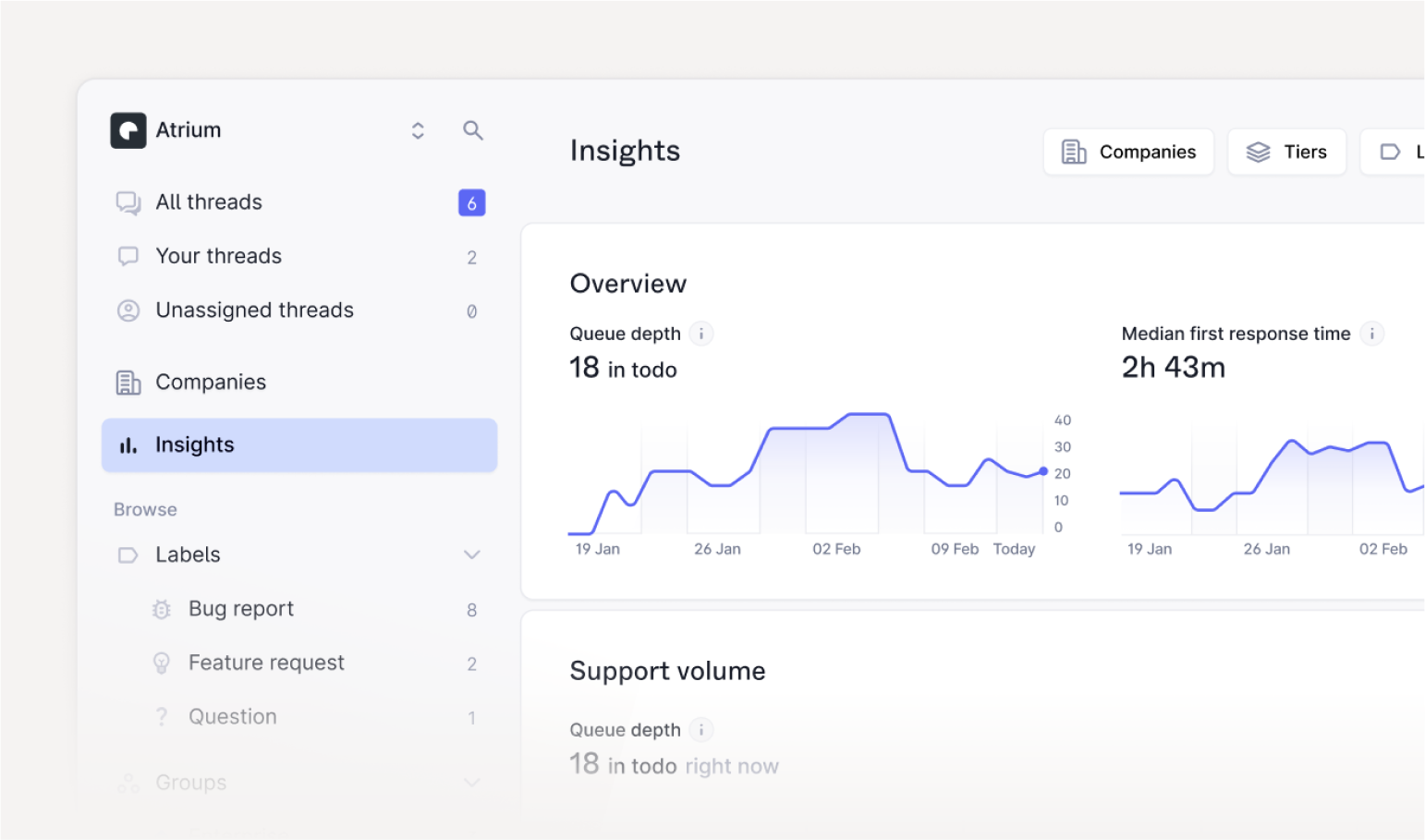
The challenge with building real-time reporting for support
Plain's user experience is fast. Within its web application, Plain leans heavily on the browser to eliminate loading states and refresh UI components immediately as users navigate through the app.
Any data-driven features that they incorporated would need to fit within this philosophy. They didn't want customers to wait as dashboards loaded; they wanted the data to be immediately available.
At the same time, they also recognized the importance of data freshness. Customer support is a real-time business; ticket states and support conversations happen synchronously, and reporting must be completely up-to-date with the state of reality to be trustworthy.
“If the data isn't real-time, it immediately feels untrustworthy. If you mark a support thread as resolved or assign some SLA to an issue, and you don't see that change immediately reflected in your reporting, it leads to distrust. Plus, that kind of experience wouldn't match the real-time experience that Plain otherwise offers.”
Matt VagniCTO at Plain
Compounding the technical challenge was the fact that customer support produces a lot of data. Plain has built a backend architecture that relies heavily on serverless compute and event-driven operations. Every single update to a support thread or customer produces a tremendous amount of data, and the size of that data compounds as event streams are enriched with customer dimensions, tags, metadata, and other useful bits of information that Plain captured for its customers.
Building real-time, user-facing data features at this scale posed a challenging question to Plain's engineers: "How do we do this in a performant way?"
Plain's engineers considered using their existing internal analytics infrastructure, a combination of Segment, Google BigQuery, and Metabase, to power these features. They figured that BigQuery's online analytical processing (OLAP) abilities would be able to support their user-facing needs.
This approach, however, resulted in way too much latency.
“Even if we had the highest level of enterprise tier from Segment and BigQuery, there would still be like a three hour delay before we could use that data, so that idea was completely dead on arrival.”
Matt VagniCTO at Plain
Plain wants to focus on building their product
Plain employs highly capable engineers. Given the time and resources, they could have deftly spun up their own real-time analytics backend to support their in-product reporting features.
But that ran counter to their ethos: to focus on building a useful product. Plain has a commercial engineering team with a commercial focus, and while building an analytics service would likely be an enjoyable side project for their engineers, they wanted to remain focused on building a powerful customer support platform.
“We don't come to work in the morning to solve interesting technical problems. We come to work to solve interesting customer problems and build a valuable business. Learning something like ClickHouse certainly would have been a fun side quest, but managing a highly performant, real-time ETL infrastructure just isn't something we want to deal with.”
Matt VagniCTO at Plain
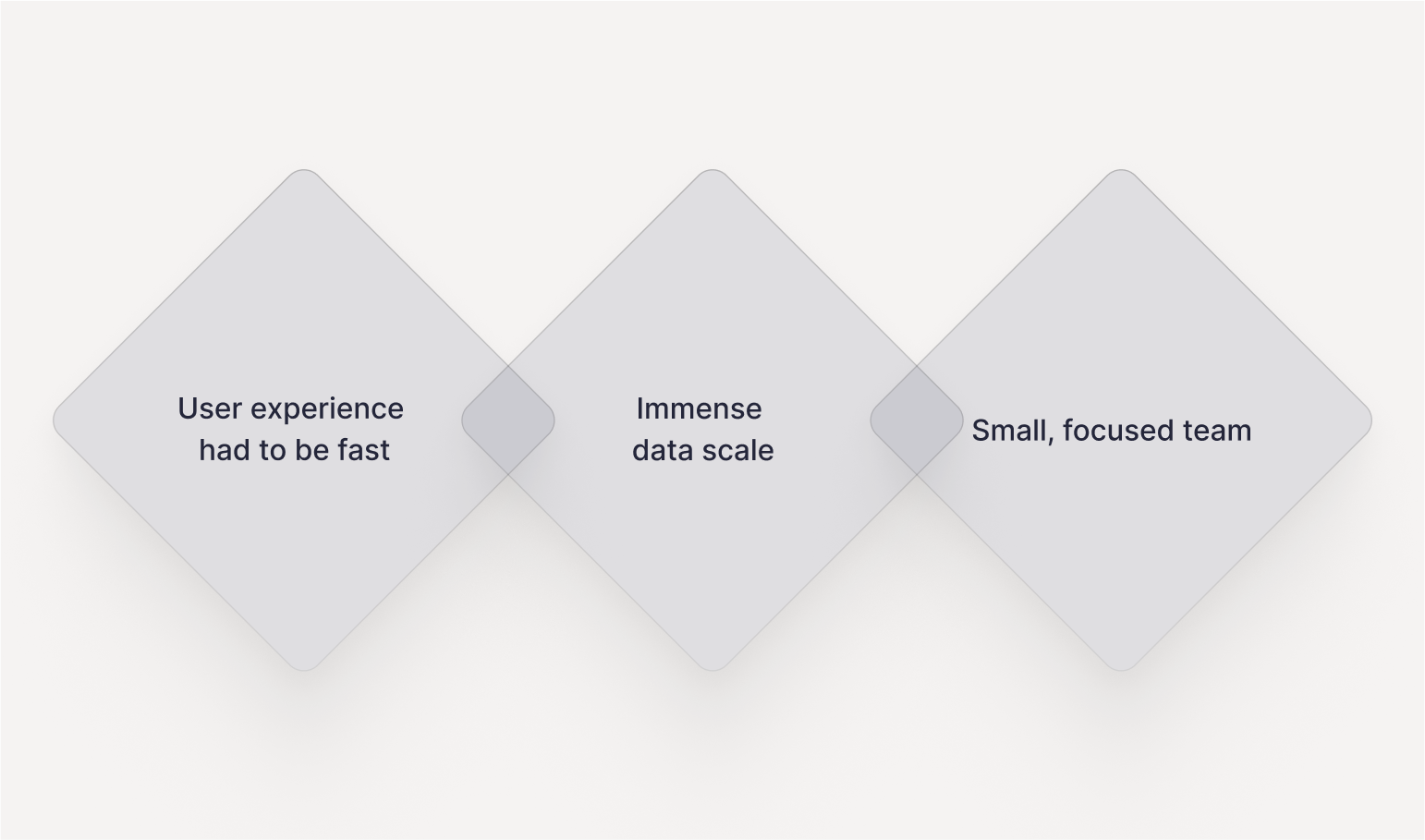
Tinybird: A "natural fit" for Plain
Plain's engineers quickly settled on Tinybird to provide the real-time data infrastructure they needed to build the features their customers wanted.
While they did consider a few alternatives - the BigQuery solution described above, a zero ETL AWS solution to Redshift, history tables in Postgres, etc. - all of these approaches only felt like a partial solution that would still require them to build added services and API layers to allow their application to interface with the analytics service.
Tinybird provided the tooling and infrastructure that Plain's engineers needed to build and scale an analytics API without setting up any infrastructure, maintaining any external ETLs, or writing any code beyond SQL. Tinybird handles data ingestion and load balancing, data storage and compute, and hosts Plain's analytics API via the dynamic REST endpoints that Plain's engineers can build in Tinybird.
“Building highly-performant, real-time data infrastructure is Tinybird's core remit. They're very, very good at it. Choosing Tinybird let us focus on our core remit while they focused on theirs. It was a very natural fit.”
Matt VagniCTO at Plain
Handling semi-structured data to give customers granularity
Plain allows its customers to define their own data model when analyzing their support. They can slice and dice their analytics by metrics and fields that are important to their business.
But offering such flexibility required Plain's engineers to think critically about how best to handle unstructured or semi-structured data.
“Every support request has a bunch of data around it. It has labels, priorities, tags, and custom data our customers might define. There are workspaces and threads. A support request comes in and then lots of things happen and then it gets closed, and in that arc, all of that data is somehow important to someone.”
Matt VagniCTO at Plain
Within Plain's event-driven architecture, anything that happens within Plain's system fires an event, which normally maintains the entire payload of the entity that changed. Whether it's a thread or a customer, the entire entity and its metadata get included in the payload.
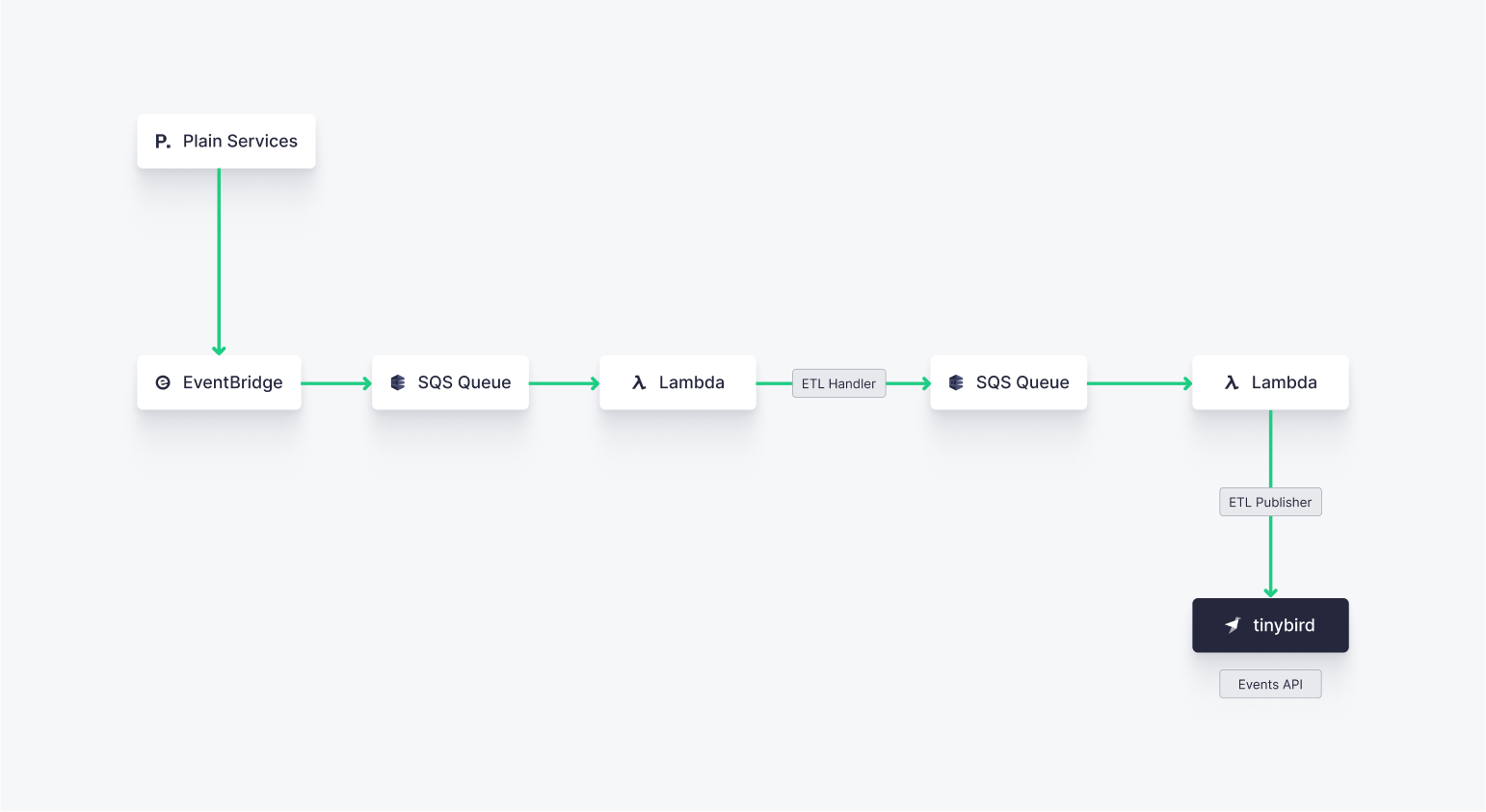
When those events are fired, Plain uses a Lambda along with SQS to queue requests and send them to Tinybird via its Events API. Tinybird handles processing, load balancing, and writing those events into the underlying database.
Plain maintains raw tables in Tinybird, frequently adding new columns as new data models arise, and uses Tinybird's Pipes interface to massage and model the data in a way that makes sense to its customers. Once they're happy with the pipelines they've created, they simply publish them as dynamic REST endpoints that integrate with their frontend application.
“Customer support is really nuanced. We understand the data really well, and we're specialists in the kinds of data-driven features we want to create. By using Tinybird, we can really focus on building great data products instead of focusing on the infrastructure to support them.”
Matt VagniCTO at Plain
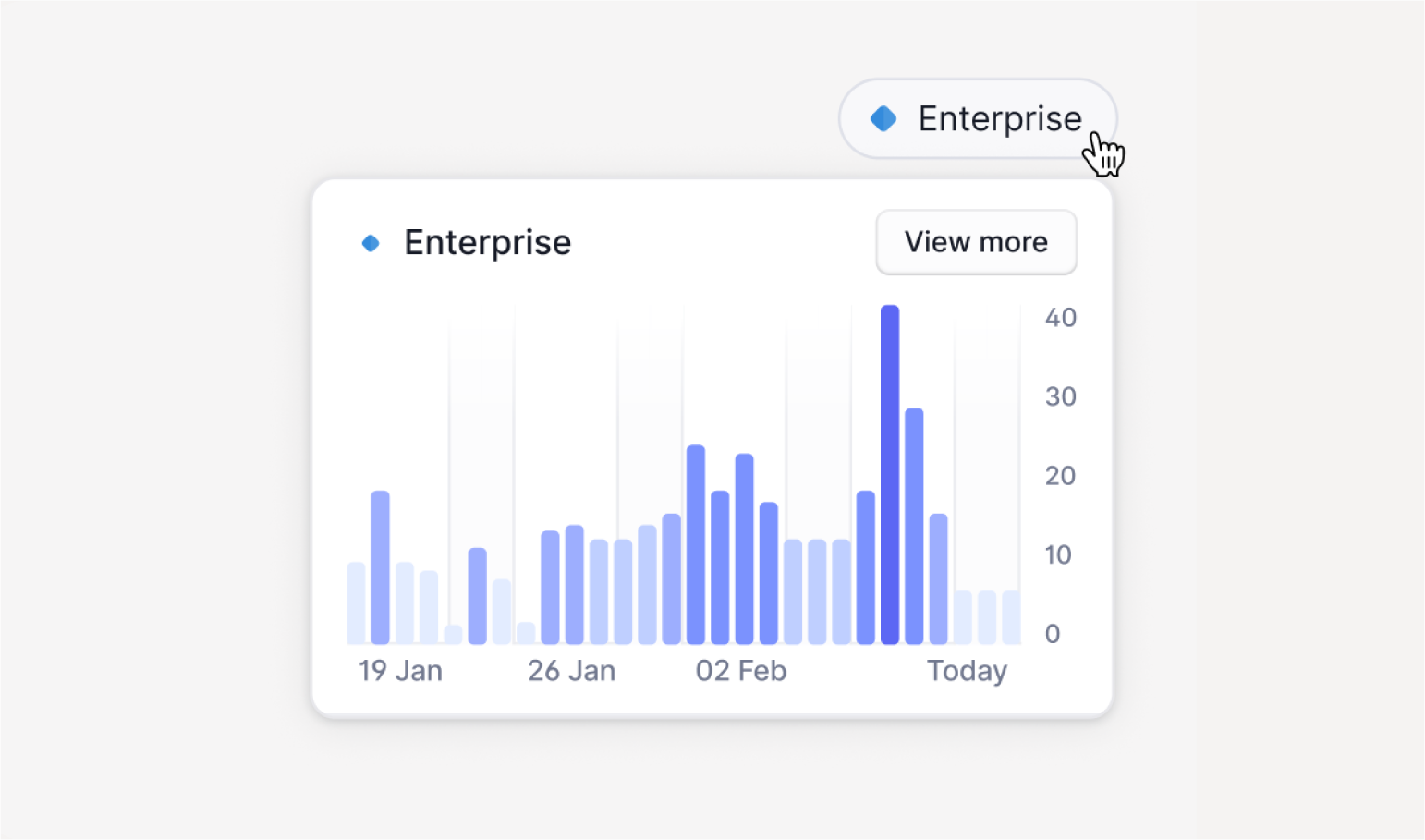
Moving beyond in-product reporting
Plain has been able to ship a great in-product reporting experience very quickly thanks to Tinybird. But they don't intend to stop at just reporting.
“The reality is that Tinybird is really just like a database. You don't have to use it for just in-product reporting. You can, and it's amazing for that, but if you wanted to use it to feed some automated workflow or some internal statistics or whatever you need it for, you can. The data is there, the performance is great, and it's really easy to use.”
Matt VagniCTO at Plain
Having Tinybird in their back pocket allows the engineers at Plain to think beyond just in-product reporting use cases and imagine other data-driven features, automations, personalizations, and workflows they could build on top of the data they already have. And with Tinybird, they don't need to worry about adding a new tool to their stack. They can work with a familiar interface to build new pipelines and APIs to support the real-time data features they need.
“When you're a small team, adopting new tech into your stack is risky. If you choose the 'just right thing' for every new project, you'll end up with 95 different tools and 10 people to manage them. Tinybird is like this lower level primitive that we can continually build on top of without having to add more stuff to our stack.”
Matt VagniCTO at Plain
Regardless of what they end up building, Plain's engineers know that, with Tinybird, they can move fast. It took them just 4 weeks to ship their first feature to production after completing an initial proof of concept, and much of that time was spent on perfecting the design rather than creating and scaling data pipelines.
As they continue to discover new use cases, they'll lean on Tinybird to provide the performance, scale, and speed to quickly ship the data-driven features that their customers want.
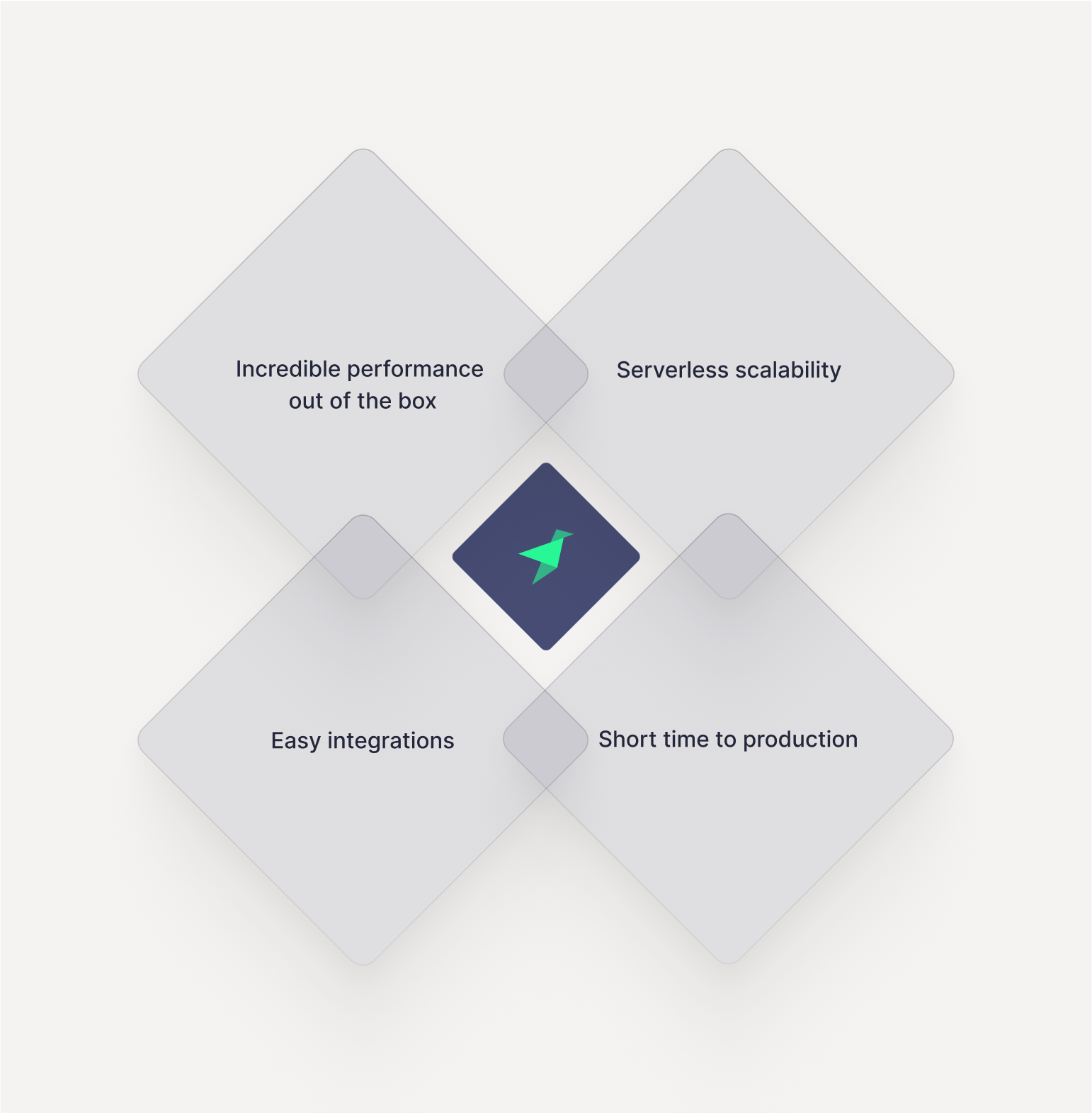
Discover the power
of real‑time analytics

